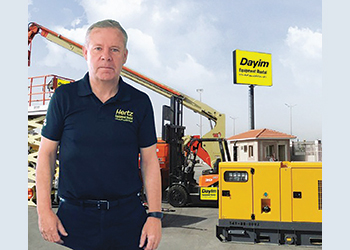
 Figure 4 ... the complete resource strategy and skills management model
Figure 4 ... the complete resource strategy and skills management model
If an organisation either has high turnover or is lagging behind on the digitalisation competencies, then action needs to be taken at once, and this article is invaluable to set the course right in 2022, Dr Saadi Adra, CEO, of Advisors, tells OGN
In 2019, employee turnover increased by 8.3 per cent from the previous year, and by 88 per cent from 2010 ((Work Institute). This rate reached an alarming 57.3 per cent in 2021 (Bureau of Labor Statistics).
High turnover together with the pressing need for a better strategy for the digital world are perhaps two alarming things that are keeping CEOs and leaders awake at night.
It becomes more critical when the ‘digitally-competent’ staff starts to migrate. This is then a red flag and is a sign that the end is near.
 |
Figure 1 ... skill level description |
Although digitalisation skills readiness and employee turnover might seem as two distinct factors, there just might be a direct causal relationship between the two.
The turnover of digitally developed staff in a digitally mature environment is much lower than elsewhere. Check the turnover rate at Google, Microsoft, Apple, and even Aramco.
Statistics show that the cost of talent shortage varies; it is projected at $435.7 billion for the US, $90 billion for the UK, and $147.1 billion for China (Catalyst, 2020).
Resources are unquestionably the most valuable asset hence developing the right structure, acquiring the right talent, upskilling for the needs of the digital era, while retaining all of them, altogether is the real challenge.
In simpler terms, answering questions such as ‘What skills do we have?’ and ‘What skills do we need?’ is an imperative for the sustainability of the organisation.
People, their skills and experience have become a critical aspect for the operations of companies with a dependency on information and communications technology (ICT). Clearly oil and gas, petrochemicals, EPC contractors and operators alike are within these.
 |
Figure 2 ... The seven levels of responsibility |
Most companies don’t know the current skills of their digital, cybersecurity and ICT workforce, or what they need in the short-, medium- or long-term.
Without this there is significant risk of visible business disruption, cybersecurity breach, digital transformation and project failure, compromised ability to deliver products and services to customers at agreed levels, poor employee engagement, recruitment and retention, ineffective training and development.
SFIA has been developing the right framework based on experience to solve real time problems related to skills and competencies encounter in any job role to allow organisations achieve a consistent and integrated skills and people management system.
SFIA is a not-for-profit global foundation that undertakes collaborative development. It was built by industry and business for industry and business, and offers industry-led skills and competency framework for the digital world. It defines the skills and competencies required by professionals who design, develop, implement, manage, and protect data and technology.
SFIA’s core principles are community-led collaboration, openness and sharing, support for the global ecosystem, flexibility, integrity, relevant, straightforward and usability.
With over a 20-year track record of successful use, proven sustainability, and timely updates, SFIA has been adopted by governments, corporates, and individuals in almost 200 countries.
SFIA exists to enable and support the workforce and skills management cycle. It has assessed and provided 121 professional speciality skills with 495 skill level description (figure 1).
Skills proficiency and professional competency are attained at a particular level due to the practice of that skill in a real-world situation.
 |
Figure 3 ... generic attributes of the seven levels of responsibility |
The SFIA framework is built on a straightforward 7-level framework that brings together professional skills, behaviours, and knowledge to reflect experience within the real-world working environment.
The seven SFIA levels of responsibility provide the backbone for the SFIA framework (figure 2). They are not levels of increased knowledge, academic achievement or years of practice, but from following what you are guided to do (Level 1) up to setting strategy, inspiring the organisation, and mobilising the workforce (Level 7), combine to provide a common language to describe levels of responsibility across roles in professional disciplines.
These levels of responsibility are described with generic attributes and include: Autonomy, Influence Complexity Business Skills and Behaviours and Knowledge, and are outlined for each level of responsibility in a consistent manner with an increasing responsibility, accountability, and impact from Levels 1 to 7 (figure 3).
Figure 4 shows the complete resource strategy and skills management model that assesses the flow of SFIA implementation of integrating the processes, starting from planning and organising to reward.
To comprehend the importance of these seven processes, some key and challenging questions need to be asked:
• How sure are you about the right set of skills/capabilities/knowledge/attributes that you need to realise vision 2030?
Plan and Organise: A general description and two-word adjectives are not enough to describe the right set of skills that define the needed competencies. Instead, SFIA capitalises on a detailed background and generic attributes that are taken from behavioural skills, personality, background, and experience that are collected in real-time, and a proven cluster that defines a role perfectly and accurately.
• How many times do organisations recruit what seems to be the perfect resource through CVs, aesthetics and references only to discover later that it was a disastrous decision?
Acquire: SFIA generic levels measure the true competency of professionals based on five attributes according to the seven levels of responsibility: Autonomy, Influence, Complexity, Business skills, and Knowledge. This is paramount to determine where the organisations’ workforce stands for achieving strategic objectives and future visions.
• How do organisations validate that the right people with the right skills are allocated to realise top strategic initiatives? What if organisations do not possess all the needed resources to fulfil all their commitments and initiatives?
Deploy: Unlike any other global NGO, SFIA has built a framework of 121 professional skills and 495 skill level descriptions. Each skill description comprises an overall definition of the skill, some guidance notes, and an assessment of the skill up to seven levels, at which the skill might be exercised.
• Are we using international standards and best practices for assessing skills and performances?
Asses: SFIA built a common language — which is accepted worldwide by the professional world — to use with a specific description of what is needed and communicated, in contrast to the vagueness of older terminologies. Self-attempts are all over and their average cost is a little less than a million dollars. This serves three to four years mostly before needing an update.
• What is the status of the organisation in terms of identifying the gap between what it has versus what it needs, to achieve its vision?
Analyse: Some support is required to utilise the full benefits that SFIA can offer. SFIA is now available in the Mena region in 12 different languages including Arabic. For example, having a strategy for capitalising on big data for better business intelligence in the coming year or two mandates that organisations acquire the specific set of skills, according to their respective level of responsibility that will facilitate reaching future vision goals and objectives.
• How can organisations develop their best staff and update their career paths in the digital era in a manner that can enhance retaining the top performers?
Develop: Some 42 per cent of employees who are looking to find a new job say they feel their company is not maximising their skills and abilities. When an organisation knows the exact requirements for a specific role to be performed properly, it can focus on providing the right training and respective development.
• Are we rewarding the wrong people or maybe missing the right ones?
Reward: Some 42 million US workers left their jobs voluntarily in 2019. This is 27 out of every 100 employees. Rewarding the wrong people and leaving out the right ones is not just throwing away the money, but lowering the retaining rates in the organisation of its most important resource: Its star employees. SFIA identifies hidden gems that can be nurtured and provides huge opportunities for growth from organisation from within.
*Advisors, Advisors Saudi and Advisors Egypt are providing SFIA services for the oil and gas, petrochemical, EPC, government and industry to enhance resource management and readiness for the digital age.


















































































